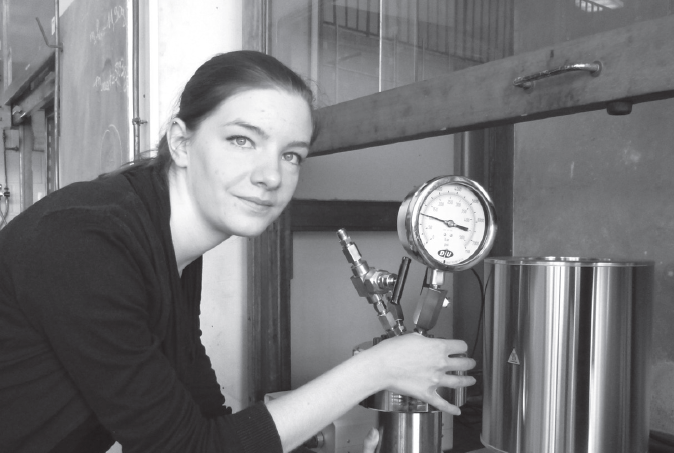SOLID STATE CHEMISTRY
Graphene powder — a new versatile material
Doctoral school : EMMA — Mechanical, Energy and Materials Sciences
Research topic : Preparation and characterization of macroscopic quantities of graphene
__________________________________________________________________________________________
Lucie Speyer is a young researcher at the Jean Lamour Institute in Nancy working with the carbon materials team. Their focus is among other things, graphene production, a sheet of carbon whose hexagonal structure resembles a bee hive. Graphene can be used in multiple contexts such as energy, computer sciences or new materials such as inks. Unfortunately, it is difficult to produce in large quantities which makes the process expensive. Lucie is currently working on developing a new production method: solvothermal synthesis1.
1 Solvothermal synthesis: a method of producing chemical compounds at high temperatures at high vapor pressure.
“Manufacturing carbon materials has posed a challenge for researchers for a long time. Having the chance to try to develop this cornerstone process is really interesting.”
Graphene is one of the most common materials currently being studied. It is a layer or sheet of carbon, on million times finer than a human hair. Its transparent quality makes it an excellent conductor for electricity and heat, and makes it mechanically resistant. It could, for example, replace silicon commonly used in computer components. Several methods for manufacturing graphene exist but these have yet to be developed for producing large quantities of high quality carbon sheets.
Lucie is working on a relatively unknown synthesis method: solvothermal synthesis1 which uses ethanol and sodium, two widely available and relatively inexpensive products. The process mixes these together react with one another at high temperature and high pressure. This reaction produces a white powder made consisting of tiny bubbles which still contain ethanol. This white powder is then subjected to pyrolysis2, to eliminate the remaining ethanol. The small bubbles then react to the heat by erupting, leaving a black powder which is a mixture of graphene and coal. Lucie’s research involves trying to obtain a high quality powder by adjusting the temperature and reaction times. Next, she analyses the powders with different instruments such as a high-powered microscope to determine the best conditions for producing large quantities of this pure carbon material. She is also investigating the mechanisms that contribute to the formation of the white powder and graphene to further improve the quality of the final product, while avoiding some of the negative aspects of synthesis. Sodium, for example, is a dangerous substance that will explode on contact with water, and sometimes even with air, which requires work to be done in an atmosphere protected environment. To be able to replace sodium with a less dangerous product would represent significant progress which would facilitate large scale production using this technique.
2 Pyrolysis: thermochemical decomposition at elevated temperatures in the absence of oxygen.
Objectives —
- To produce large quantities of high quality graphene
- To test multiple applications: fuel cells, strengthening of raw polymers



